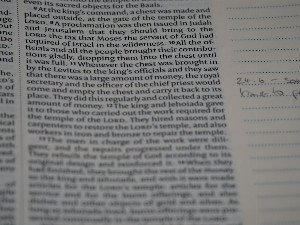Hazlif Nazif
SIMULASI PENYEARAH 1 FASA DENGAN FAKTOR DAYA MENDEKATI 1 DAN MINIMUM TOTAL HARMONIC DISTORTION DENGAN KONTROL ARUS HYSTERESIS PADA SISTEM TENAGA LISTRIK
Introduction
Simulasi penyearah 1 fasa dengan faktor daya mendekati 1 dan minimum total harmonic distortion dengan kontrol arus hysteresis pada sistem tenaga listrik. Simulasi penyearah 1 fasa dengan kontrol arus hysteresis untuk meningkatkan faktor daya mendekati 1 dan meminimalkan THD pada sistem tenaga listrik, mencapai THD 7% dan PF 0.956.
Abstract
Peralatan-peralatan elektronik skala rumah tangga, perkantoran dan industri yang membutuhkan energi listrik DC yang dihasilkan penyearah dioda. Namun didalam peralatan-peralatan elektronik, terdapat penyearah dioda. Penyearah ini termasuk jenis beban non linier dapat menimbulkan THD yang tinggi dan power factor rendah dan berbentuk tidak sinusodal pada arus input. Oleh karena itu, konverter boost mengunakan kontrol arus hysteresis untuk dapat menurunkan arus harmonik yang tinggi dan dapat memperbaiki power factor dan membentuk sinusiodal pada arus masukan. Dalam penelitian ini, peneliti mencoba konverter boost dengan kontrol arus hysteresis untuk meminimalkan nilai arus harmonik yang tinggi dan menaikkan power factor rendah pada arus input. Dalam penelitian ini, pemodelan, disimulasikan, pengujian simulasi dan dianalisa dengan menggunakan software PSIM. Dari hasil pengujian dan analisa dapat diperlihatkan bahwa penyearah tanpa konverter boost menghasilkan nilai THD arus 268% dan nilai power factor 0.2215 dan berbentuk tidak sinusiodal, sedangkan konverter boost mengunakan kontrol arus hysteresis menghasilkan nilai THD arus sebesar 7%, nilai faktor daya 0.956 dan membentuk gelombang sinusodal hampir mendekati sinusiodal murni. Nilai THD arus sebesar 7% yang dihasilkan belum memenuhi standar IEEE Std 519-2014
Review
This paper presents a simulation-based study on improving power quality issues stemming from single-phase diode rectifiers, a common source of non-linear loading in power systems. The core problem addressed is the high Total Harmonic Distortion (THD) and low power factor (PF) associated with these rectifiers, which lead to distorted input current waveforms. To mitigate these issues, the authors propose and investigate a boost converter employing hysteresis current control. The primary objective is to achieve a power factor approaching unity and minimize THD, ultimately aiming for a more sinusoidal input current from such loads. The methodology involves modeling and simulation using PSIM software to demonstrate the effectiveness of the proposed active power factor correction (APFC) technique. The results presented are quite compelling, illustrating a significant improvement in power quality metrics. Without the boost converter, the simulated rectifier exhibited an alarmingly high current THD of 268% and a very low power factor of 0.2215, along with a non-sinusoidal current waveform. With the integration of the boost converter and hysteresis control, the current THD was drastically reduced to 7%, and the power factor substantially improved to 0.956, with the input current waveform becoming much closer to a pure sinusoid. This dramatic enhancement clearly demonstrates the potential of the chosen approach in addressing critical power quality challenges. While the simulated improvements are substantial, the authors candidly acknowledge a key limitation: the resulting 7% current THD does not fully comply with the more stringent requirements of the IEEE Std 519-2014. This self-identified limitation is crucial and points towards areas for future work. For the study to be more impactful, it would be beneficial to explore further optimization of the hysteresis controller parameters or consider alternative advanced control strategies to meet the industry standards. Additionally, discussing the practical implementation challenges, such as sensor noise, switching losses, and control complexity in a physical system, would enrich the paper. Future research could also include experimental validation to confirm these promising simulation results and explore the converter's performance under varying load conditions and grid disturbances.
Full Text
You need to be logged in to view the full text and Download file of this article - SIMULASI PENYEARAH 1 FASA DENGAN FAKTOR DAYA MENDEKATI 1 DAN MINIMUM TOTAL HARMONIC DISTORTION DENGAN KONTROL ARUS HYSTERESIS PADA SISTEM TENAGA LISTRIK from Jurnal Teknik AMATA .
Login to View Full Text And DownloadComments
You need to be logged in to post a comment.
Top Blogs by Rating
Unlocking Life's Source Code:...
By Sciaria
Ops Debt: Unmasking the Silent...
By Sciaria
Beyond the Charts: Unlocking S...
By Sciaria
Favorite Blog
Beyond the Stereotype: Unpacki...
By Sciaria
Big Data's Unintended Conseque...
By Sciaria
Unveiling the Hidden Journeys:...
By Sciaria
Related Research
Penerapan sak emkm pada usaha mikro kecil dan menengah (umkm) di desa wolaang berbasis aplikasi akuntansi android
Single-phase half-wave uncontrolled converter with a single-phase ac generator
Feature updates announcements: new feature: online first articles
Share
Notice Board
- INOVASI PENDIDIKAN TINGGI: IMPLEMENTASI KURIKULUM MBKM DI FAKULTAS AGAMA ISLAM (FAI) UNIVERSITAS MUHAMMADIYAH SUMATERA UTARA MEDAN
- IMPLEMENTATION OF GLOBAL SUSTAINABLE DEVELOPMENT GOALS AT THE LOCAL LEVEL: STUDIES OF HOME INDUSTRY IN KEDUNGLENGKONG VILLAGE, SIMO SUB-DISTRICT, BOYOLALI DISTRICT, CENTRAL JAVA PROVINCE, INDONESIA
- APPLICATION OF SHELL WASHING MACHINE TO IMPROVE HYGIENE OF FISHERMEN GROUPS IN TAMBAKREJO SEMARANG





